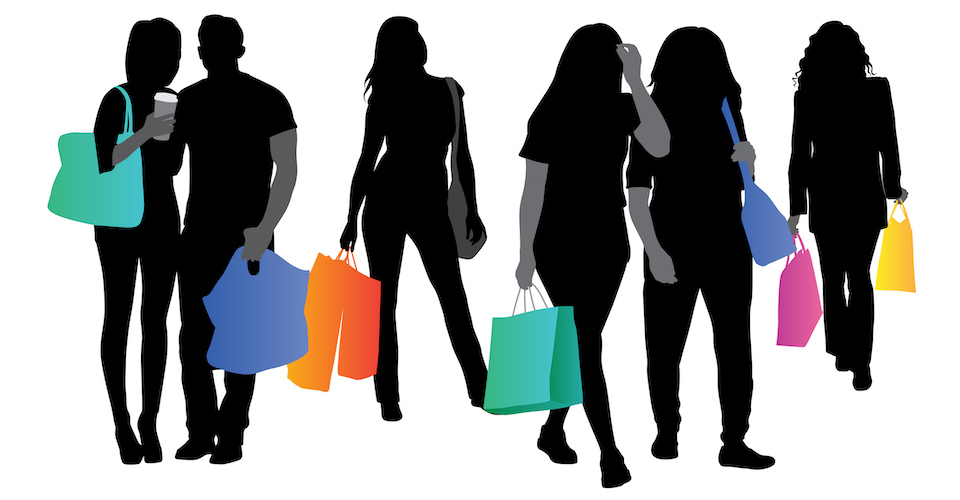
 Go to homepage
Go to homepage
For as long as gifts have been exchanged on Valentine’s Day, giving your loved one hideously ugly clothing or shoes would have been considered worse than a mere fashion faux pas. It likely would have extinguished any spark of romance quicker than pouring a bucket of water on a candle.
But this year, a spectacularly garish and unflattering sweater, dress, top, or pair of shoes—such as Balenciaga’s Triple S sneaker—may be the way to a fashion-forward woman’s heart. Because, as Financial Times writer Lou Stoppard put it, “Heinous is so hot right now.”
It’s also very, very expensive—as in Gucci, Balenciaga, Prada, and Louis Vuitton expensive. Consider: Gucci makes a bright red, ribbed merino wool cardigan sweater. It features a large bunny and flowers on each side of the front. On the back, in addition to more flowers, it has a large flying saucer shooting rainbow beams, a tiger head with yellow eyes, and a bumble bee. The price tag: $5,500.
I understand that ugly, like beauty, is in the eye of the beholder. But products that, by almost any objective standard, are outrageously ugly are being sold for outrageously high prices.
Which raises the obvious question: Why?

As a marketing scholar, one of my primary research interests is exploring the psychological processes that influence consumer behavior toward luxury products. As the ugly fashion trend has become unavoidable over the past couple of years, I found myself wondering: If the products are not aesthetically pleasing, why are people buying them?
It’s not like the ubiquitous, ugly Christmas sweaters you see at holiday parties, which are viewed as fun in a kitschy kind of way. With the ugly fashion trend, high-end fashion designers have actually made ugly an aesthetic. In the eyes of consumers—quite counterintuitively—ugly is a signal of luxury. And luxury, in turn, generally signals prestige. But only if it is recognized as luxurious. I’ll explain.
In an ongoing research project with Claudia Townsend, associate professor of marketing at the University of Miami Business School, and Zijun (June) Shi, a PhD Candidate in quantitative marketing at Carnegie Mellon University’s Tepper School of Business, we conducted a series of studies and found that a luxury product that is mundanely ugly is not enough to generate this perception of prestige. It needs to be distinctively ugly—meaning it has to be unique, noticeable, or eye-catching. In other words, it needs to be horrifically, unforgettably ugly.
In the studies we conducted with consumers both at university laboratories and online, we showed them images of different products, and both measured and manipulated attractiveness, luxury, and distinctiveness. We used real products (T-shirts, denim jackets, and tops), and imagined products (belts and sneakers). We also used multiple luxury (e.g., Gucci, Prada, Louis Vuitton) and non-luxury (e.g., H&M, Forever 21, Express) brands, as well as multiple price points (e.g., $400 vs. $40, $1,000 vs. $100).
Our studies showed that distinctively ugly luxury products are perceived to be more expensive and more fashion forward than all other products—including luxury products that are distinctively pretty! In fact, a pilot study we conducted at the outset found that noticeability and recall/recognition were negatively correlated to attractiveness ratings for luxury items. Simply put, that means consumers are more likely to notice and recall products that are distinctively ugly.
We also found that a pretty product needs the luxury brand name logo on it to be perceived as more fashion forward. But no prestigious brand logo is necessary for consumers to view distinctively ugly luxury products as being fashion forward. After all, the reasoning goes, if it’s that ugly, it must be from a luxury brand—logo or no logo present. Otherwise, why would anyone buy it?
In addition, we looked at which products consumers would choose to buy. Once again, you might think that luxury brand clothes that are distinctively pretty would have an advantage. They don’t. Luxury products that are distinctively ugly are just as likely to be chosen as those that are distinctively pretty. We validated these findings with real sales data from Amazon, where we again confirm an ugly luxury premium: Among non-luxury brands, consumers are more likely to purchase attractive products; but among luxury brands, ugly products are equally as likely to be purchased.
What our studies showed is that perceptions of fashion forwardness—of being in the know—can outweigh aesthetics when choosing a luxury brand item. Ugly has somehow become a signal of taste, of the good life, of luxury and prestige.
So be forewarned. Valentine’s Day may be ugly this year. But as long as it’s distinctively ugly, it probably will be just fine.